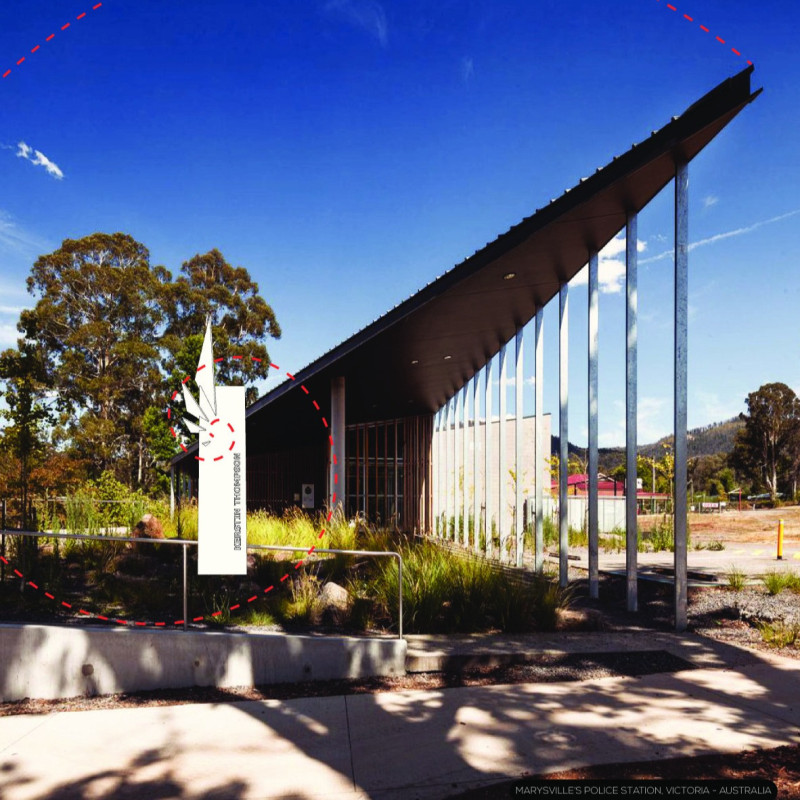5 key facts about this project
The Marysville Police Station, designed by Kerstin Thompson, is located in Victoria, Australia, in a community that has shown resilience following the Black Friday bushfires. The station functions as a base for law enforcement and a connection point for the community. The design aims to blend with the natural surroundings and respond to the history of the area, creating a space that feels like part of the landscape.
Architectural Concept
The key idea behind the design is the relationship between the building and its environment. The project uses geometric parameters, particularly the golden ratio, to shape its proportions and organization. By employing triangular forms, the station aligns itself with the surrounding natural features, enhancing visual appeal while fostering a sense of unity with the landscape.
Site Integration
The positioning of the police station is intentional, allowing it to rise from the ground as if it belongs amidst the natural scenery. Its low and elongated form offers a humble presence next to the adjacent park. The tapered entry verandah invites people from the street while preserving sightlines into the park and displaying views of the Edgar and Kitchener Mountains. This careful integration promotes community engagement and reflects the connection to the local context.
Materiality
Material selection is essential in emphasizing the design’s relationship to the area. The police station features 50 mm steel plates for structural strength and 100 mm precast concrete panels for durability. Locally sourced timber surfaces pay homage to the historic timber buildings that were once prominent in Marysville, linking the new station to the town’s architectural past.
Community Role
The Marysville Police Station serves more than just a practical function; it is a focal point for community interaction. The design symbolizes a new beginning for the town, uniting service and memory in a space that encourages public use. Its architectural language remains true to local traditions, promoting a sense of belonging within the community and enhancing social connections.
The dynamic patterns of light and shadow that dance across the façade enrich the building's presence. As sunlight moves throughout the day, it highlights this connection between structure and environment, creating an evolving experience for those who interact with the space.



















































